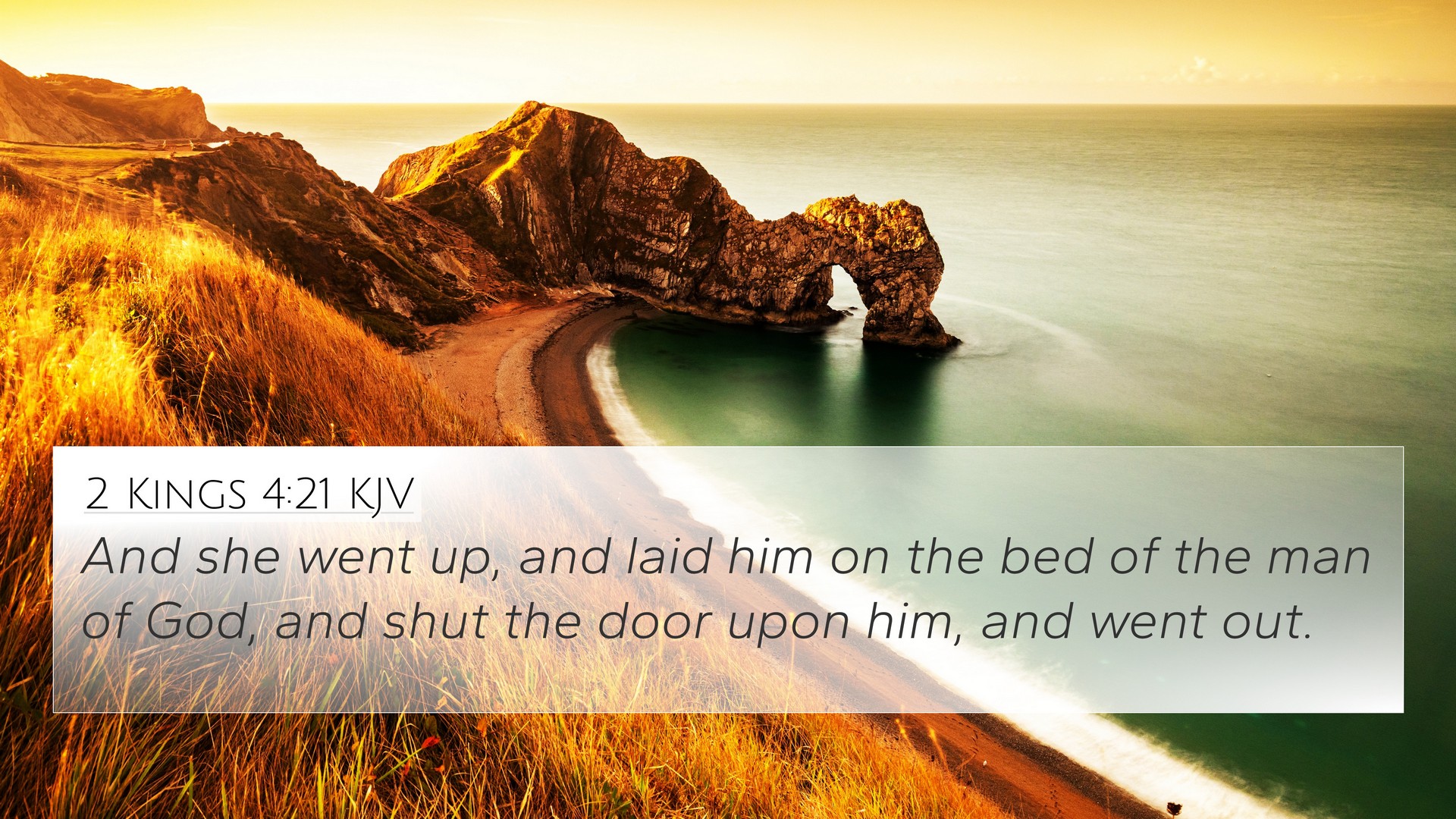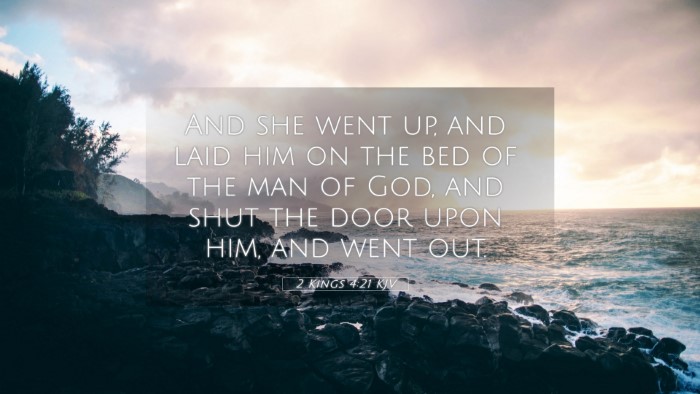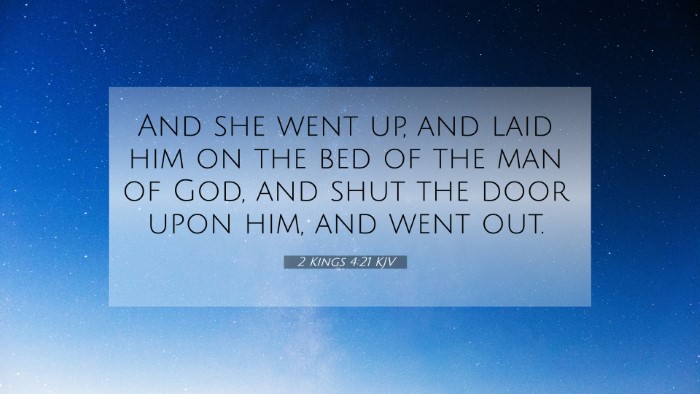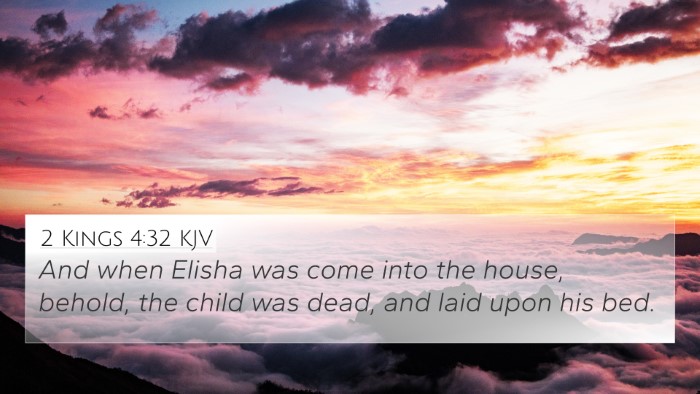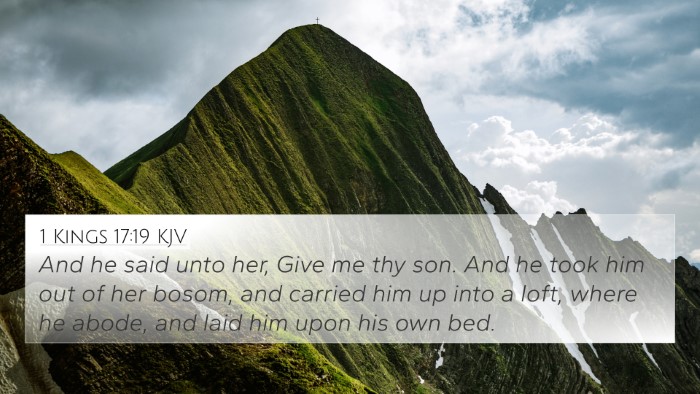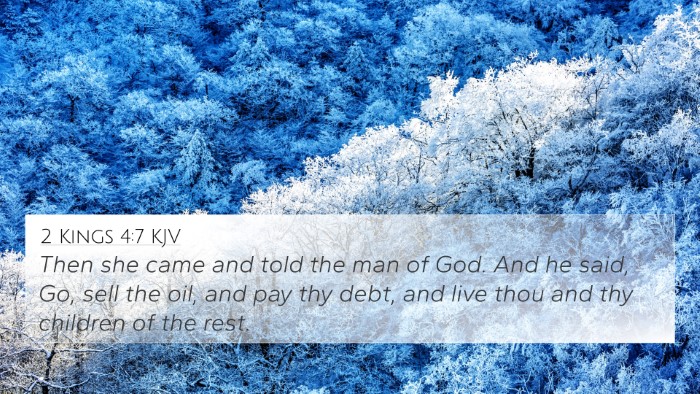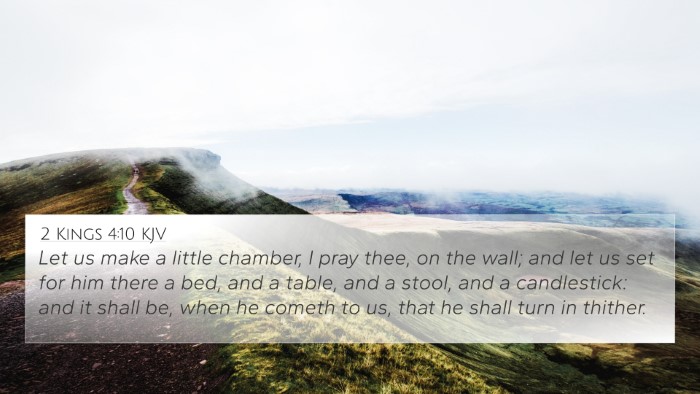Understanding 2 Kings 4:21
Verse Context: 2 Kings 4:21 states, "And she went up, and laid him on the bed of the man of God, and shut the door upon him, and went out." This verse offers a poignant moment in the narrative of Elisha and the Shunammite woman, emphasizing themes of faith, loss, and hope.
Verse Meaning Summary
This verse illustrates the Shunammite woman's immediate reaction to her child's death, demonstrating both her deep sorrow and her strong faith in the prophet Elisha. By placing her son in the room of the man of God, she symbolizes her belief that Elisha, through God, holds the power to bring life amidst death.
Commentary Insights
- Matthew Henry's Commentary: Henry emphasizes the Shunammite woman's calm response to tragedy, noting her direct action of placing her child in the room of the man of God. This act signifies her unwavering faith, as she seeks Elisha to potentially revive her son.
- Albert Barnes' Notes: Barnes discusses the implications of her actions, pointing out that she did not wail publicly but rather sought solitude, showcasing her personal sorrow mixed with hope. The act of shutting the door indicates her desire for privacy in her grief.
- Adam Clarke's Commentary: Clarke notes the cultural significance of the Shunammite woman's actions. He connects this moment to the broader theme of God's miraculous power being manifested through His prophets, suggesting that her hope rested not on human comfort but on divine intervention.
Thematic Connections
This passage can be connected thematically to several key concepts within Scripture:
- Faith in Times of Despair: The actions of the Shunammite reflect a deep faith that prompts her to seek divine assistance when facing overwhelming loss.
- Prophetic Authority: The placement of her son in the prophet's chamber signifies the importance of prophetic figures in Israel's spiritual and social landscape.
- Death and Resurrection Themes: This story foreshadows the resurrection themes seen throughout Scripture, particularly demonstrated in the New Testament.
Cross-References for Deeper Understanding
The following Bible verses relate closely to 2 Kings 4:21, providing context and insight into its meanings:
- 1 Kings 17:17-24: In this passage, Elijah raises the widow's son, paralleling Elisha's miracle and enhancing the theme of resurrection.
- 2 Kings 4:32-37: Elisha's direct involvement in resurrecting the Shunammite woman's son further ties together the faith demonstrated in 4:21.
- Luke 7:11-15: Jesus raises the widow's son at Nain, showcasing the continuity of God's merciful power through His messengers.
- John 11:1-44: The resurrection of Lazarus illustrates the ultimate power of Christ over death, serving as a New Testament parallel to the miracles of the Old Testament prophets.
- Romans 8:11: This verse emphasizes the life-giving power of the Spirit, which ties back to the miraculous acts seen in both the Old and New Testaments.
- Isaiah 25:8: A prophetic reference to God's victory over death, reinforcing the themes of hope present in the Shunammite woman's actions.
- Hebrews 11:35: Discusses the resurrection of the dead, connecting the Shunammite woman's faith with the broader narrative of hope in God's deliverance.
Conclusion
In 2 Kings 4:21, we see a profound expression of faith amidst despair, as the Shunammite woman exemplifies the hope that believers hold in times of tragedy. Through commentaries and cross-references, readers can appreciate the interconnectedness of biblical themes and the importance of faith in God's power to bring life from death.
Exploring Further
To gain a comprehensive understanding of how 2 Kings 4:21 fits within the larger narrative of Scripture, one may explore biblical concordance tools or cross-reference guides. These resources allow for in-depth study and connection of themes, enhancing the reader's grasp of how various biblical texts engage in inter-Biblical dialogue.
